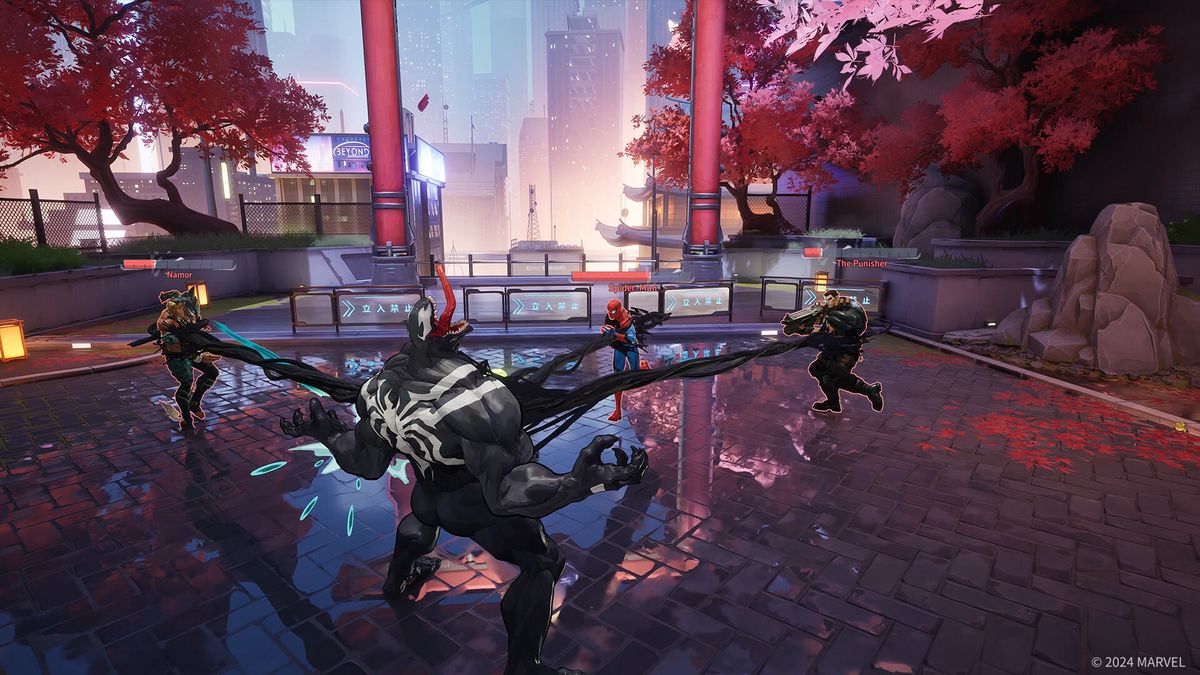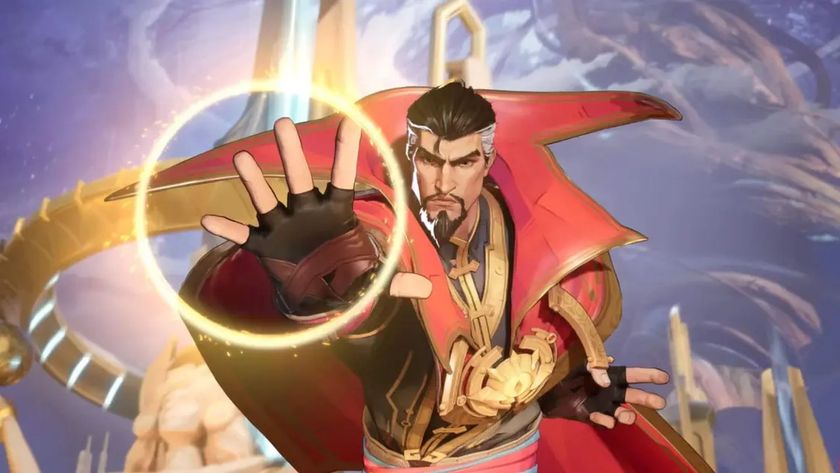12DOVE Verdict
Marvel Rivals wants to reinvent the hero shooter genre with its complex characters and special synergies, but it's so preoccupied with trying to be like Overwatch that it forgets to play to its own strengths. Its oversized roster also needs more balancing – and more differentiation from Blizzard's stable of heroes.
Pros
- +
High skill ceiling
- +
Some excellent hero ability sets
- +
So much Marvel history
Cons
- -
Blatant similarities to Overwatch character designs
- -
Serious character balance issues
- -
Missed opportunity to develop a unique identity
Why you can trust 12DOVE
After several matches in Marvel Rivals, I finally feel comfortable with Captain America's kit. It helped that I started seeing him as a sturdy damage dealer instead of the tank he's technically classified as, and figuring out how to use his throwable shield properly didn't hurt, either. I decide to take a risk and use the captain's mobility skill – where he leaps into the air, rushes forward, and crashes down – to rush in and claim the control zone before the match timer hits zero. I forget for a moment that I'm not playing Overwatch 2, and Captain America isn't Winston. Instead of tightly controlled movement, I get unpredictable momentum, no say in where Mr America goes, and instant death as he sails in the wrong direction into the entire opposing team.
This is Marvel Rivals, NetEase's first attempt at a hero shooter of the kind Blizzard popularized with Overwatch, in brief. It's enticing in its complexity and frustrating in its messiness, with an oversized roster that, at its worst, feels hastily slapped together. There's real potential here, and some of Marvel Rivals' playable heroes and villains have exceptional skillsets that redefine what the genre can be. It's just buried under a heap of balance problems, blatant mimicry, and half-finished ideas.
Museum of Marvel
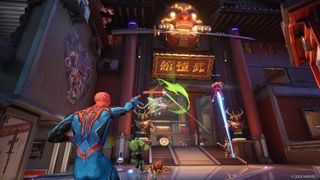
Release date: December 6, 2024
Platform(s): PC, Xbox Series X|S, PS5
Developer: NetEase Games, Marvel Entertainment
Publisher: NetEase Games
Marvel Rivals does have a story but, at least over the review period, there's not much of it. Regular Dr Doom meets the version of himself from Doom 2099, and the meeting causes what Marvel Rivals dubs a Timestream Entanglement, which is a fancy way of saying a bunch of Marvel universes collide. Nearly three dozen heroes and villains join forces to stop the nefarious doctors, hailing from an impressive blend of Marvel's most popular and most obscure franchises that span decades. The likes of Loki and Scarlet Witch fight alongside Squirrel Girl and Peni Parker, and Marvel Rivals even tries tying some of them together with special hero synergy skills that unlock when specific character combinations team up.
The actual narrative is just an excuse to lump all these characters together and make them fight each other, though there's the potential for NetEase to expand. Missions start with a little briefing about the significance of the coming battle, and the menu's gallery section has several mini-serials that unlock as you progress the battle pass. "Mini" is the key here, since each issue is about four pages long – not much room to work with. But it is at least an attempt to play with the comic book storytelling Marvel Rivals is drawing on.
Outside of that, despite bringing decades of superhero history together, Marvel Rivals so far shows no interest in actually doing much with it beyond mashing digital action figures together. I'd have loved to have seen things like unlockable art, creator interviews, or more original storytelling to really make this feel like the fan package that the roster suggests Marvel Rivals would like to be. It's currently got a whiff of the MultiVersus about it, with disparate parts feeling a bit too disconnected. Perhaps this is something that can come down the line, but at launch I can't help but feel like something is missing.
Super familiar
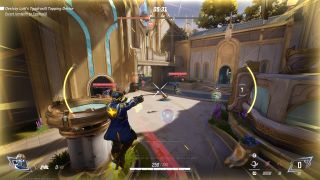
It'd help smooth over just how similar it is to Blizzard's Overwatch as well, and it is very similar at times. Small-scale resemblances, such as match types, are understandable. Custom matches, casual modes, and ranked battles are standard across most competitive multiplayer games. Seeing something a bit more creative built around Marvel would've been nice, though that might happen later as the arcade mode opens up, which was unavailable in the review build. Combat roles are also recognizably Overwatch. Marvel Rivals divides its roster of 33 characters into three roles – Duelist, or damage dealer; Vanguard, which is meant to be a defensive tank-like role; and Strategist, a support type that encompasses buffs, debuffs, and healing.
What's less easy to overlook is how blatant other similarities are. Marvel Rivals launches with three modes – Convoy, Domination, and Convergence, all of which are identical to Overwatch's original modes, Escort, Control, and Hybrid. There's no effort to differentiate them even slightly.
Some characters are also close to 1:1 recreations. Scarlet Witch absorbs energy from foes and launches magic orbs, the same as Moira, while Hawkeye's archery-oriented kit is just like Hanzo's, down to the wakizashi melee attack and double jump. Marvel Rivals even replicates Hanzo's distinctive aiming reticule. The similarities are tacky, but more than that, they're confusing. Other heroes have exceptional kits built around their specific powers, which makes these legally distinct variations of Overwatch characters seem completely out of place.
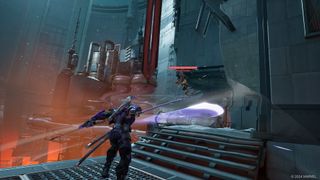
In fact, Marvel Rivals' biggest strength is how thoughtful and well-considered its stronger character designs are, and that's also where it can legitimately outshine Overwatch 2. Blizzard's heroes have straightforward skillsets, and few except Zenyatta have any ability to set up for more powerful or complex attacks. Reinhardt hits things. Mei freezes her foes. Tracer baffles with speed. Marvel Rivals' most interesting heroes have complex ability sets like you'd expect to find in a MOBA or MMO-lite, and while they work particularly well with a coordinated team, they're balanced enough where you can go it alone if your allies aren't in the mood to cooperate.
Take Spider-Man, for example. He has a basic web-slinging attack and a special web that debuffs any foe it hits. Those debuffed enemies take extra damage from one of his other abilities, so playing Spider-Man well requires carefully balancing cooldowns and using his mobility skills to keep up with marked opponents. Peni Parker, on the other hand, can anchor herself to a spot with spider silk, cover an area in techno-webbing, fill it with mines, and lure enemies to it, before yoinking herself back to the anchor point and out of harm's way. Meanwhile, Hulk begins matches as regular guy Bruce Banner, armed with only a laser gun, and you have to time and manage several states of escalating rage to unlock his full kit and go green. The skill ceiling in Marvel Rivals is high, and it's exceptionally satisfying when you finally get to grips with some of its more complex characters.
Off-balance
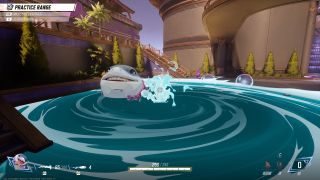
"The skill ceiling in Marvel Rivals is high, and it's exceptionally satisfying when you finally get to grips with some of its more complex characters."
The problem is how uneven much of the roster is, and skill balance is all over the place, even without the bugs that kept certain abilities from working correctly. A long-distance acorn from Squirrel Girl deals as much damage as one of Hawkeye's charged headshots, which doesn't seem quite right. Jeff the Land Shark and Venom share an almost identical ability, where both characters disappear under the stage, emerging under a target opponent to attack – but Jeff, the healer, tucks multiple enemies in his mouth before spitting them away, while Venom just pops up and smacks someone.
These are annoying, but some issues are legitimately problematic. Punisher can set up an armored machine gun that's just a little too effective at demolishing everyone in range, which forces teams to switch from the objective to stopping Punisher – repeated when he inevitably uses the skill again. Loki's big thing is creating duplicates to confuse enemies, but they're inactive until the real Loki attacks and never move. It might confuse AI foes, but human opponents can spot the real one in seconds.
Again, even these issues come from a good place. With some tweaking, they could really make each hero standout. But it feels like the developers ran out of time to finalize how to make them effective. Launching with such a large roster probably didn't make the team's task any easier, either. Overwatch has 42 characters after eight years. Marvel Rivals is launching with 33. Bigger definitely isn't better in this instance. If you were to strip the roster back to the highlights, it'd make for a stronger foundation on which to build.
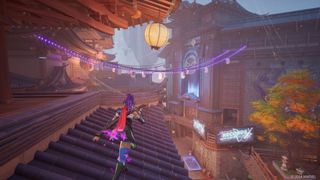
Then there are the quality-of-life issues to contend with, most of which center on lack of clear visual indicators in relation to a character's skills. Captain America has a skill that lets him leap up and crash into enemies, but controlling his movement is impossible after the skill activates. Squirrel Girl's special acorn that binds enemies has an annoying bounce effect that makes it more likely to soar over its target than to actually make contact. Magik can create portals like Overwatch's Symmetra, but you can't tell where it'll spawn or where the razor-fingered demon she summons after exiting a portal will end up. These and a dozen other minor annoyances make matches a frustrating chore. NetEase clearly wants to position Marvel Rivals as the hero shooter for a skilled audience, but the idea is to learn how a character's skills work – not how to work around the problems NetEase left in.
That's a lot of complaining, but NetEase can fix most of Marvel Rivals' biggest issues with further balancing and kit adjustments. That a game which went through closed testing still launches with this many bugs and problems is surprising, but again, messes can be cleaned. And I hope NetEase sticks with Marvel Rivals long enough to clean it up. With time, care, and more of its own identity, Marvel Rivals has the potential to make itself a deep and satisfying hero shooter. It's just not there yet.
Disclaimer
Marvel Rivals was reviewed on PC with a code provided by the publisher
Want some more comic adventures? We've got our list of the best Marvel games right here for you to pick what to play next! Or in the mood for some competitive fun? Then our best multiplayer games are for you!
Josh is a freelance writer and reporter who specializes in guides, reviews, and whatever else he can convince someone to commission. You may have seen him on NPR, IGN, Polygon, or VG 24/7 or on Twitter, shouting about Trails. When he isn’t working, you’ll likely find him outside with his Belgian Malinois and Australian Shepherd or curled up with an RPG of some description.
